TWA: Total Work of Art
through digital, physical, & temporal forms
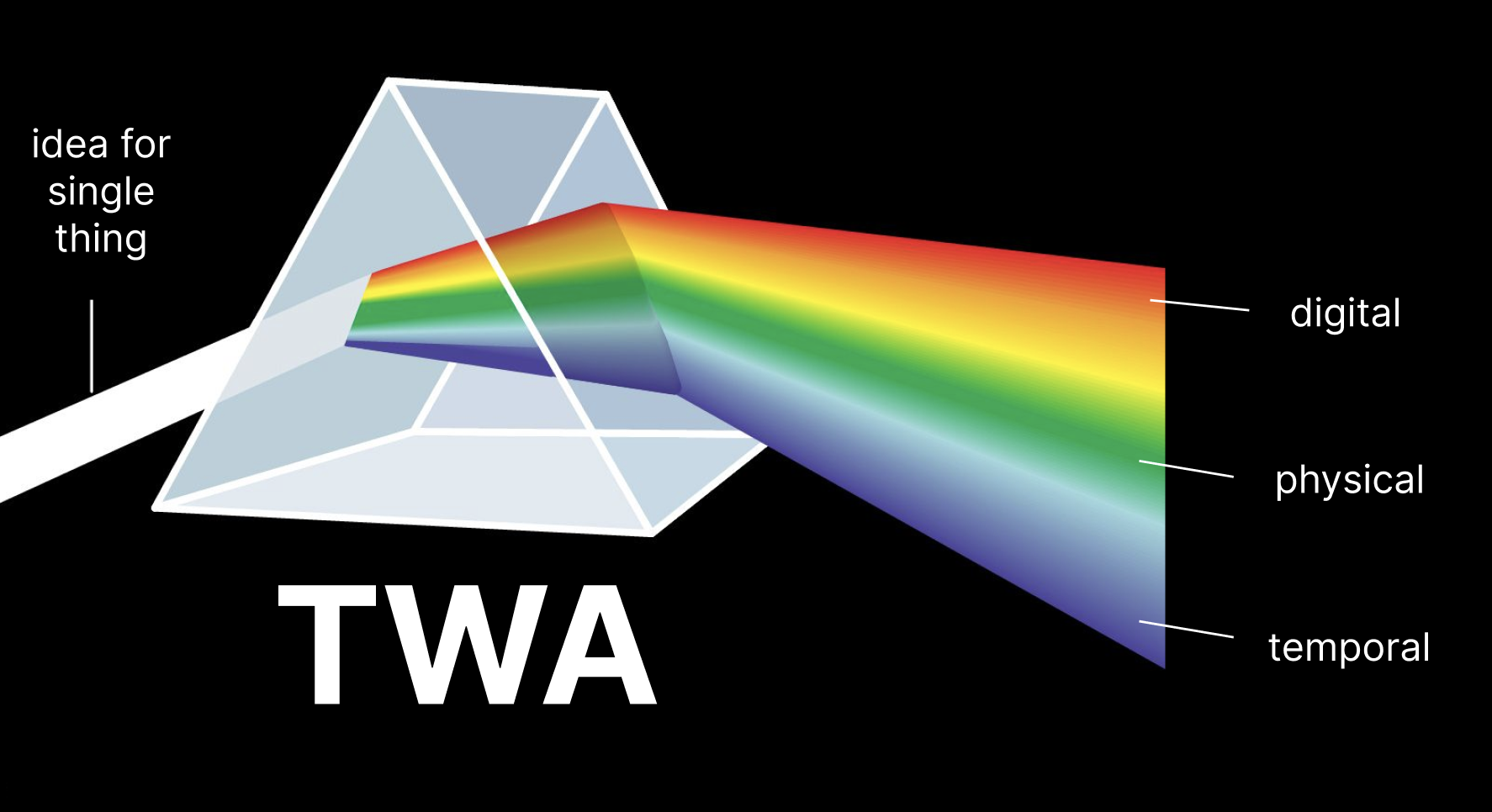
| Title | TWA: Total Work of Art |
| Subtitle | Through Digital, Physical, and Temporal Forms |
| Instructors |
Stephen Kwok, Laurel Schwulst, & Bryant Wells |
| Dates |
13 sessions ( over 7 weeks ):
|
| Time |
Thursdays: 7-9pm Sundays: noon-4pm |
| Location |
Telos ( in-person ) 303 Ten Eyck Street Brooklyn, NY 11206 |
| Price |
$2000 ( two half-priced scholarships available ) |
| Application Deadline | June 1, 2025 at 11:59pm EST |
In “TWA: Total Work of Art” we invite artists, designers, writers, programmers, and anyone else interested to shapeshift their concept across three modalities: 1) digital, 2) physical, and 3) temporal. Inspired by wide-ranging examples of design as world-building — think Bauhaus, Beyoncé, Bernadette Corporation — this class responds to how culture is experienced today, inviting participants to develop a core concept across multiple points and moments of access.
This 7 week class is led by three teachers: Stephen Kwok, Laurel Schwulst, and Bryant Wells. Meeting twice a week (on Thursdays and Sundays), each session includes conversational lectures, technical demonstrations, presentation and critique time — plus some guest visits. The class culminates in a public event in which the participants present the totality of their work.
Keywords
- Access
- Ambient
- Architecture
- Atmospherics
- Atomization
- Essence
- Responsive
- Shapeshifting
- Surround
- Translation
- Transportation
- World-building
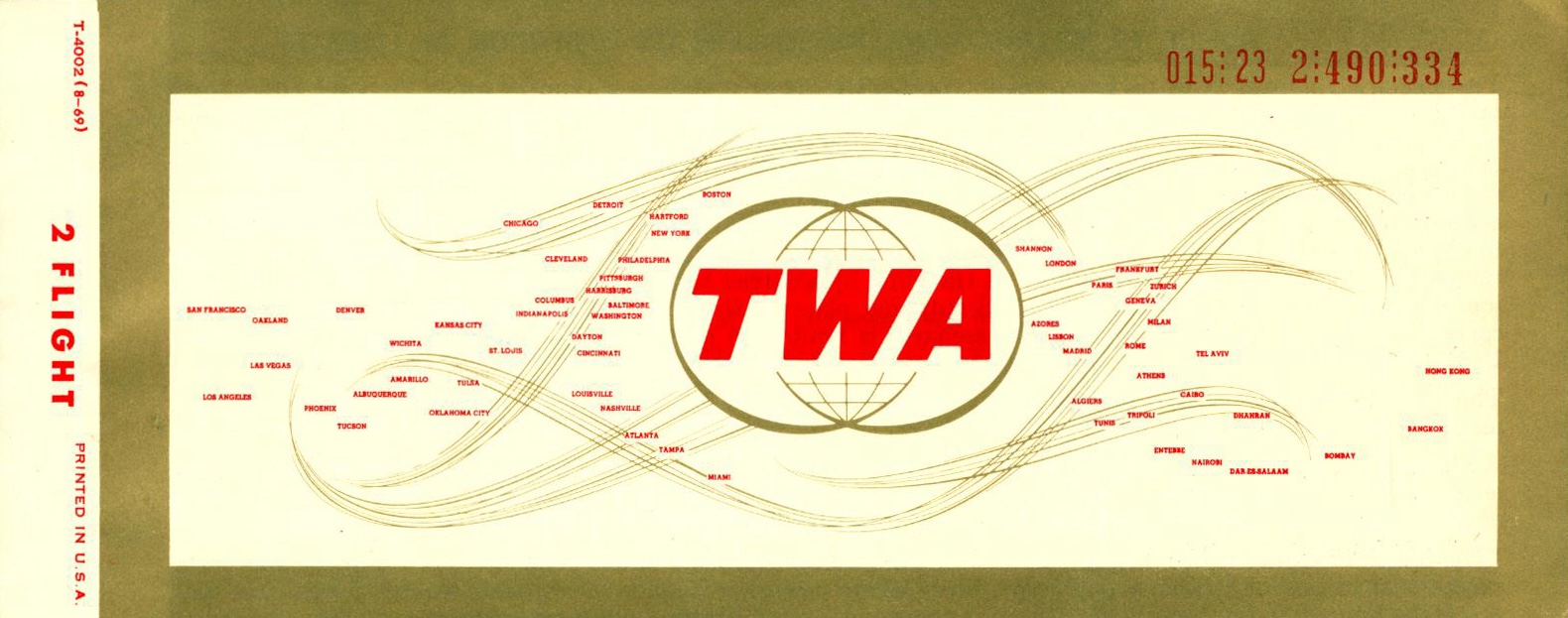
Courtesy of Lawrence M. Nagin Airline Menu and Memorabilia Collection
Background
Our idea for this class began with two references:
1 ) Shapeshifters, a seminar taught by Frederic Moffet at the School of the Art Institute of Chicago, invited graduate students to create works for three predetermined moments of presentation: a screening, an exhibition, and an evening of performance. Within this bare but demanding structure, students were challenged to create formally diverse works within a compressed timeline.
2 ) Touchpoints is a business-world concept which refers to the various modalities through which consumers interact with a product. Examples of touchpoints include ads, social media content, in-store merchandising, and the product itself, the sum encounter of which shape perception and decision-making before, during, and after purchase.
Both frameworks encourage a medium and discipline agnostic approach to making, albeit for different purposes.
What if we adopted these approaches for our own practices, for our own means? What if we start with the interplay between modalities as a given, rather than expecting a single form to contain the essence of a work? What if there is no “primary” way to experience something anymore?
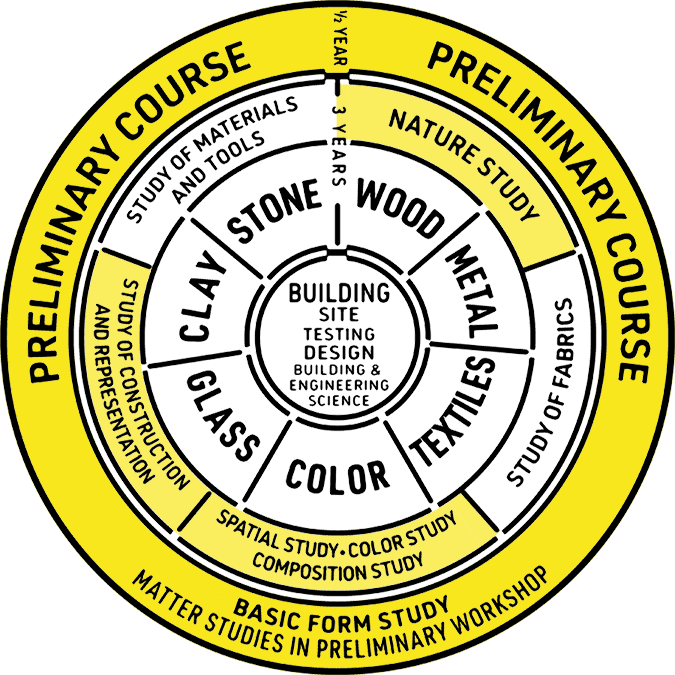
TWA — Total Work of Art
“Total Work of Art” entered the chat.
According to Wikipedia, a Gesamtkunstwerk can mean a “total work of art,” a “universal artwork,” or a “synthesis of the arts.”
Richard Wagner, a composer known primarily for his operas, popularized the term throughout his career which explored combining musical, visual, and dramatic art into an all-embracing theatrical whole.
Bauhaus, the German school of design, architecture, and applied arts, was also grounded in the concept. As described in Fred Turner’s book The Democratic Surround, artist and Bauhaus art school educator László Moholy-Nagy argued that design schools offer the kind of training that would strengthen individual American character and American society as a whole in the face of fascism in a 1940 article titled “Relating the Parts to the Whole” —
“WE NEED IN LARGE NUMBERS a new type of person — one who sees the periphery as well as the immediate, and who can integrate his special job with the great whole of which it is a small part. This ability is a matter of everyday efficiency. It will also contribute to building a better culture.”
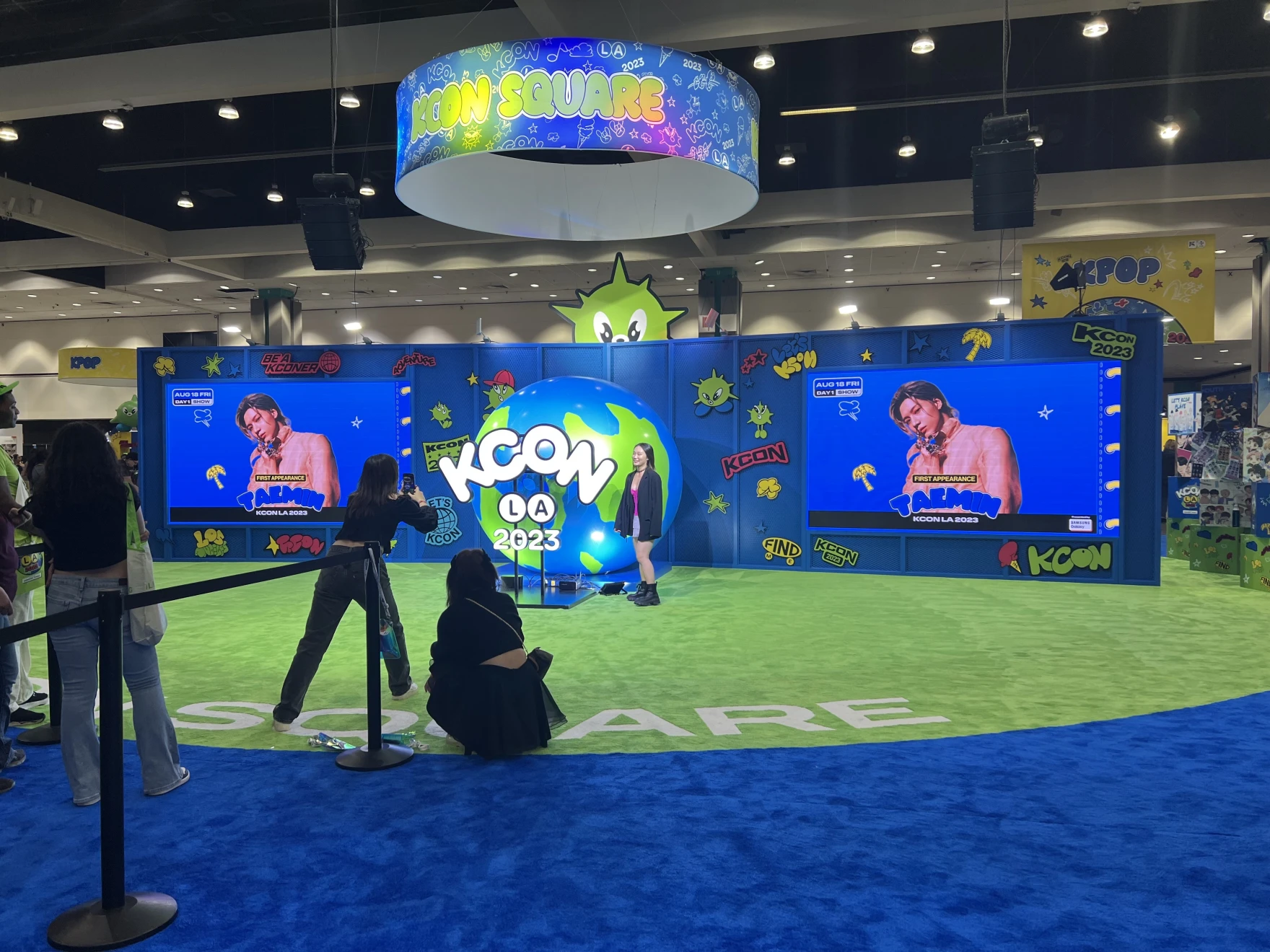
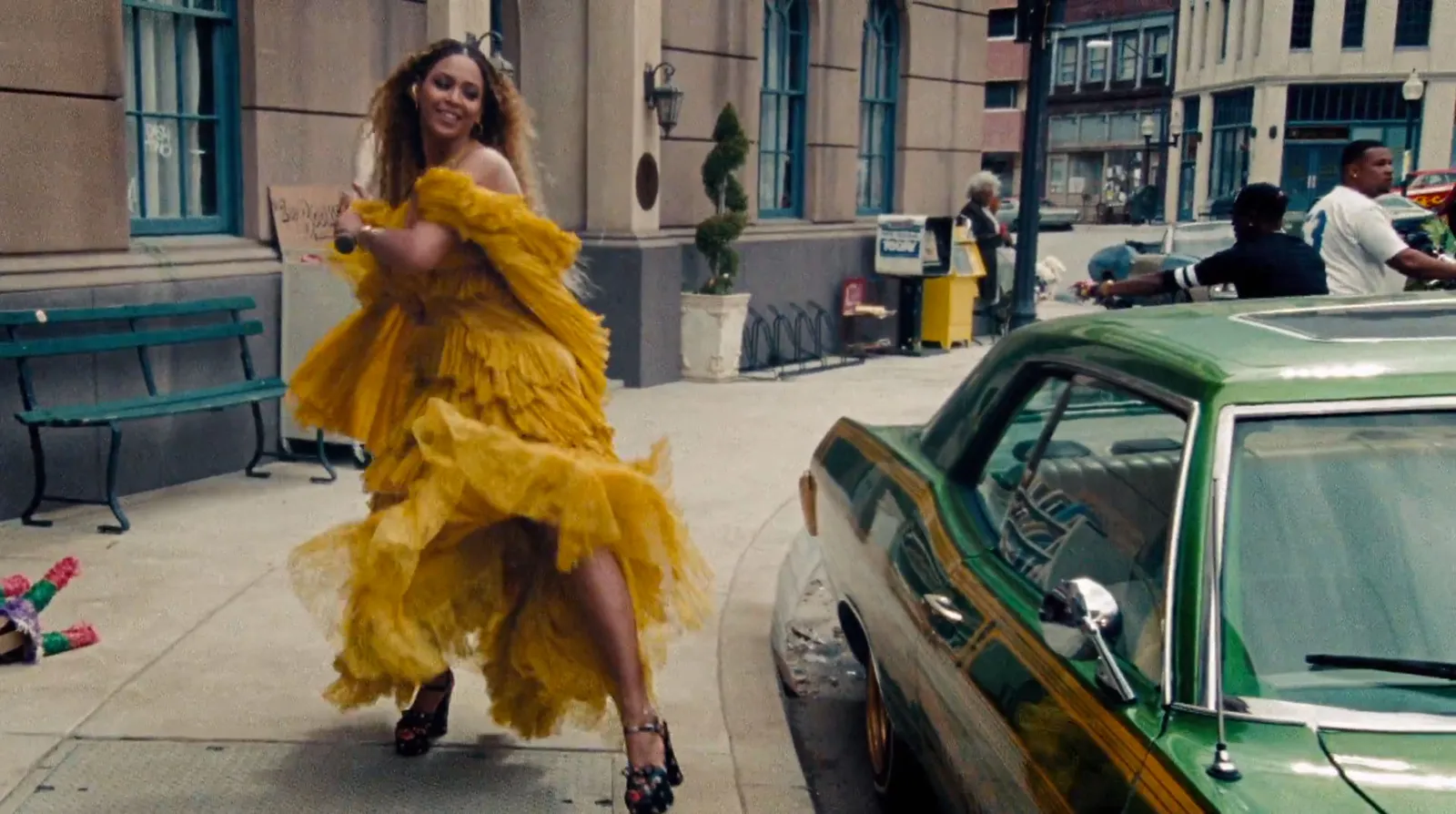
Suddenly, examples appeared everywhere, from Bauhaus and Corbusier to Beyoncé’s Lemonade and K-pop, it seemed as if there were no piece of culture in 2025 that didn’t have simultaneous physical, digital, and temporally-based modes of encounter.
As our understanding of what could be considered Gesamtkunstwerk expanded, so did our curiosity about what reconsidering this art historical concept in our current climate might provoke. What does it mean to think through a “total work of art” framework today? We call it “TWA” —
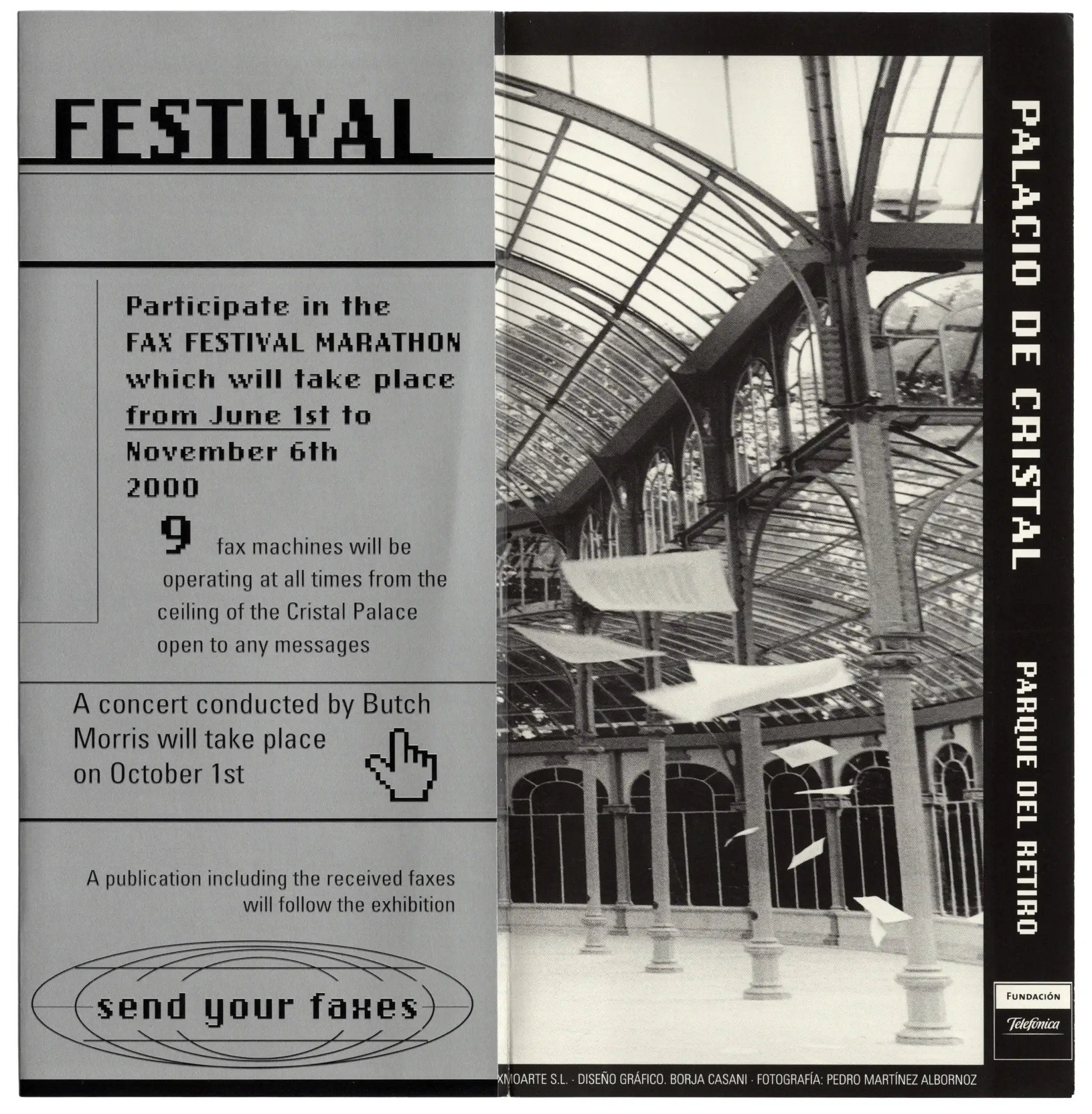
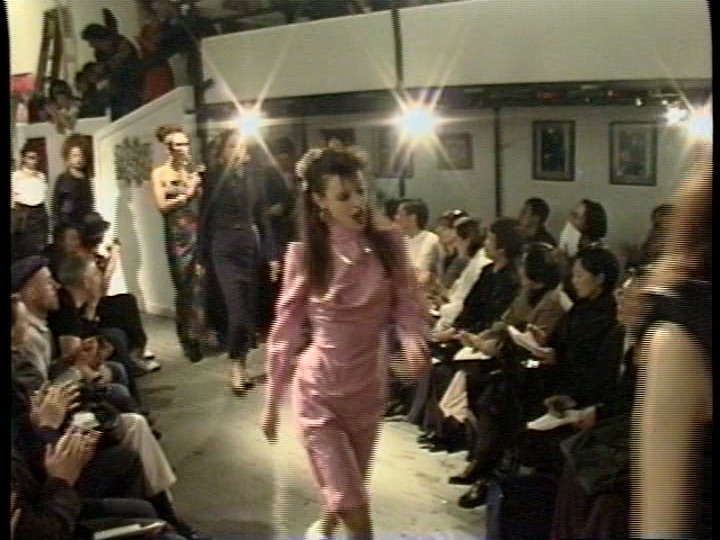
TWA — Thinking with Air
“Total work of art” has associations of dominance, control, spectacle, finality that we don’t feel entirely describes our practices. What control is even possible, we ask, in a gig economy, where we are required to switch modes, pass between contexts, and move between mediums constantly?
The fragmentation of attention... lack of differentiation... all contributes to an increasingly atomized world where it can be difficult to make anything with coherence... something solid enough to move people...
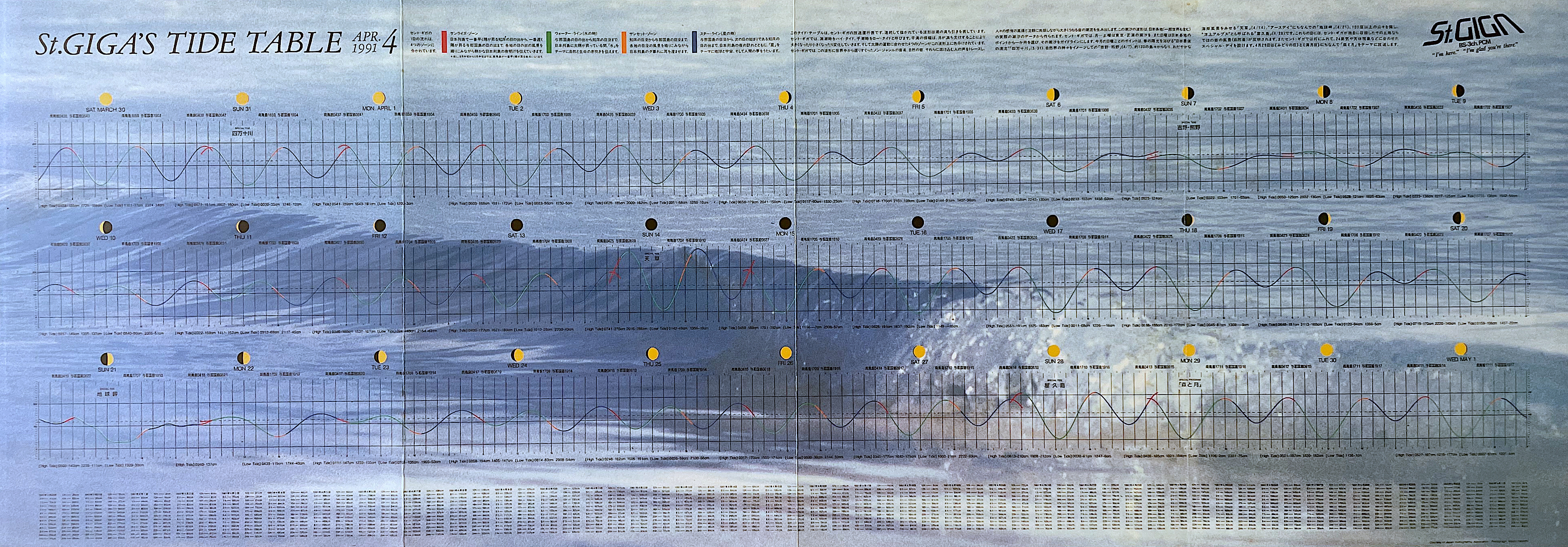
But what if we made with air? Air is the gap around and between the work you make. At first it might seem like none of it is related, but with a little intention you can bring your seemingly disparate parts and the spaces between them together. How can you make not a work, but an atmosphere?
It’s a fitting coincidence that TWA is the name of a now defunct airline, whose narrative continues in the form of a hotel — the legend lives on? Creating in this fashion is no easy task, but it is a generative provocation, one that suggests bringing in a “total work of art” mindset not to control an outcome, but to encourage a process that considers the interplay between things.
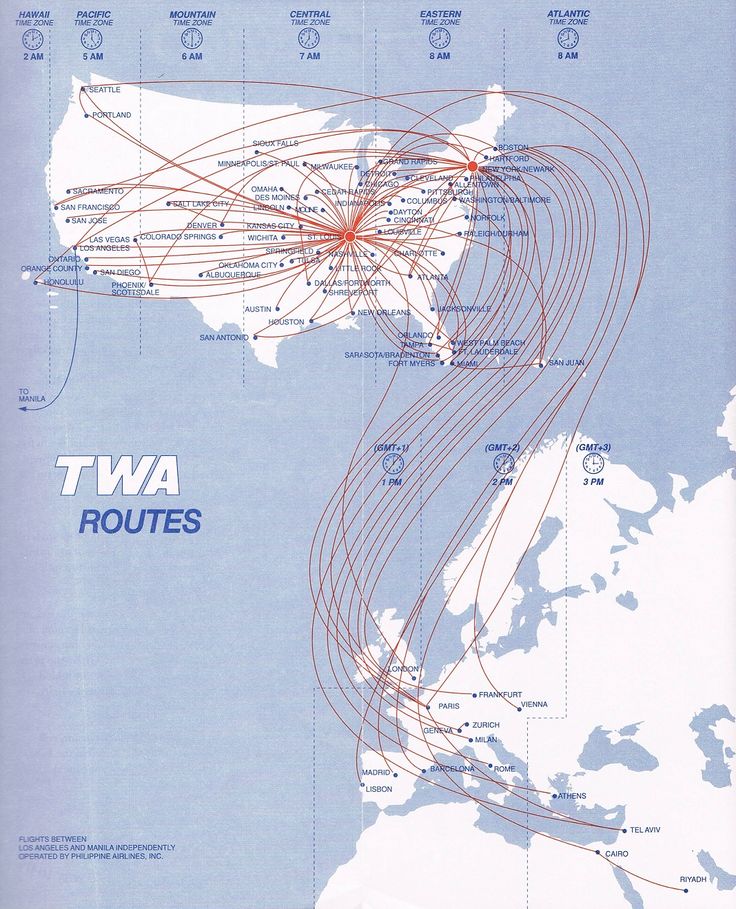
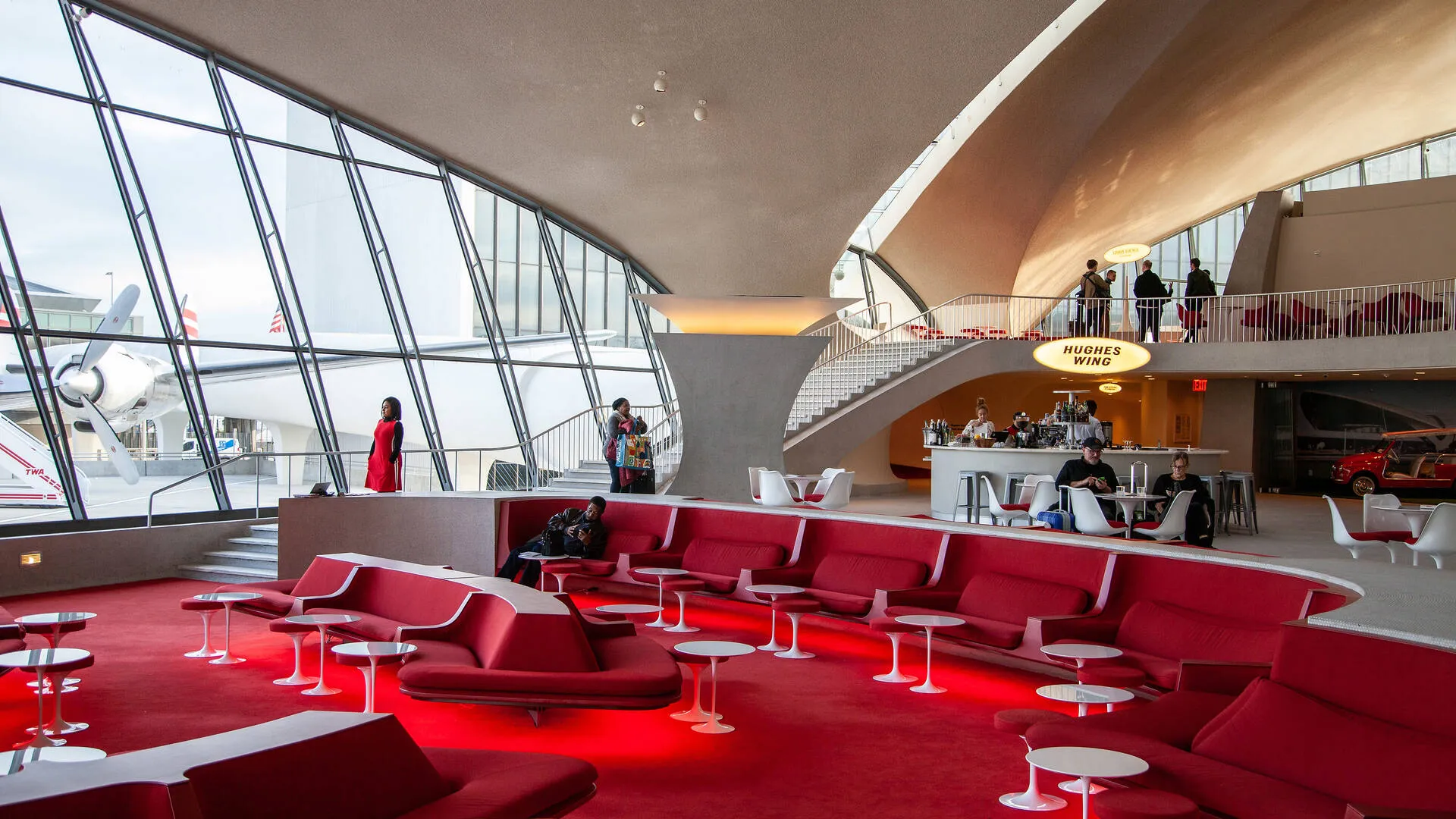
TWA — Three Worlds Aligned
Then, there were the three of us — artists and designers with inherently multi-hypenate practices. There were natural overlaps, Stephen working predominantly in performative and event-based installation, Laurel in websites as foundations for changing, performative, process-based worlds, and Bryant in the cultural production and design for (and of) physical and digital networks. Three designers, three forms.

Stephen Kwok creates situations in which contradictions between a site and the activity within it may emerge. His work spans installation, performance, and participatory events, and has been exhibited at Seoul Museum of Art, Haus der Kulturen der Welt, Center for Performance Research, the Canadian Centre for Architecture, and bologna.cc in Amsterdam. He lives in Brooklyn, teaches design at Brooklyn College, and serves as the Curator of Public Engagement at Dia Art Foundation.
Laurel Schwulst is an artist, designer, writer, educator, and technologist interested in ambient forms of design and literature, public works, and the poetic potential of the world wide web. Laurel has held design and creative direction roles at companies including Linked by Air, Kickstarter, and Are.na. She has taught design at Princeton, Yale, and her own learning initiatives: Fruitful School and now: Ultralight School.
Bryant Wells is a New York-based designer who works independently and collaboratively with artists, writers, musicians, and institutions to create websites, publications, identities, and objects. His practice explores the political and cultural effects shaping networked communication, and the metaphorical and material implications of “what’s in the air.” Bryant teaches design at the Parsons School of Design and the Yale Graphic Design MFA.

FAQ
( What is the class format? )
The class meets for thirteen sessions over the course of seven weeks. Sessions happen on Sunday afternoons (noon-4pm) and Thursday evenings (7-9pm) in part of June, all of July, and the very beginning of August. Sessions include conversational lectures, technical demonstrations, presentation and critique time. We meet in-person at Telos in East Williamsburg, Brooklyn, New York. Specific dates: 6.22 (Orientation), 6.26, 6.28, 7.3, 7.6, 7.10, 7.13, 7.17, 7.20, 7.24, 7.27, 7.31, 8.3 (Finale).
( What will I be making in class? )
The class explores a project in three forms: 1) digital, 2) physical, 3) temporal. You will be expected to shapeshift your concept into these modalities. During the digital, you may make a website, a digital publication, or an app, for example. During physical, you may create a sculpture, an installation, a book. For temporal, you might orchestrate an event, a gathering, or some other ephemeral encounter.
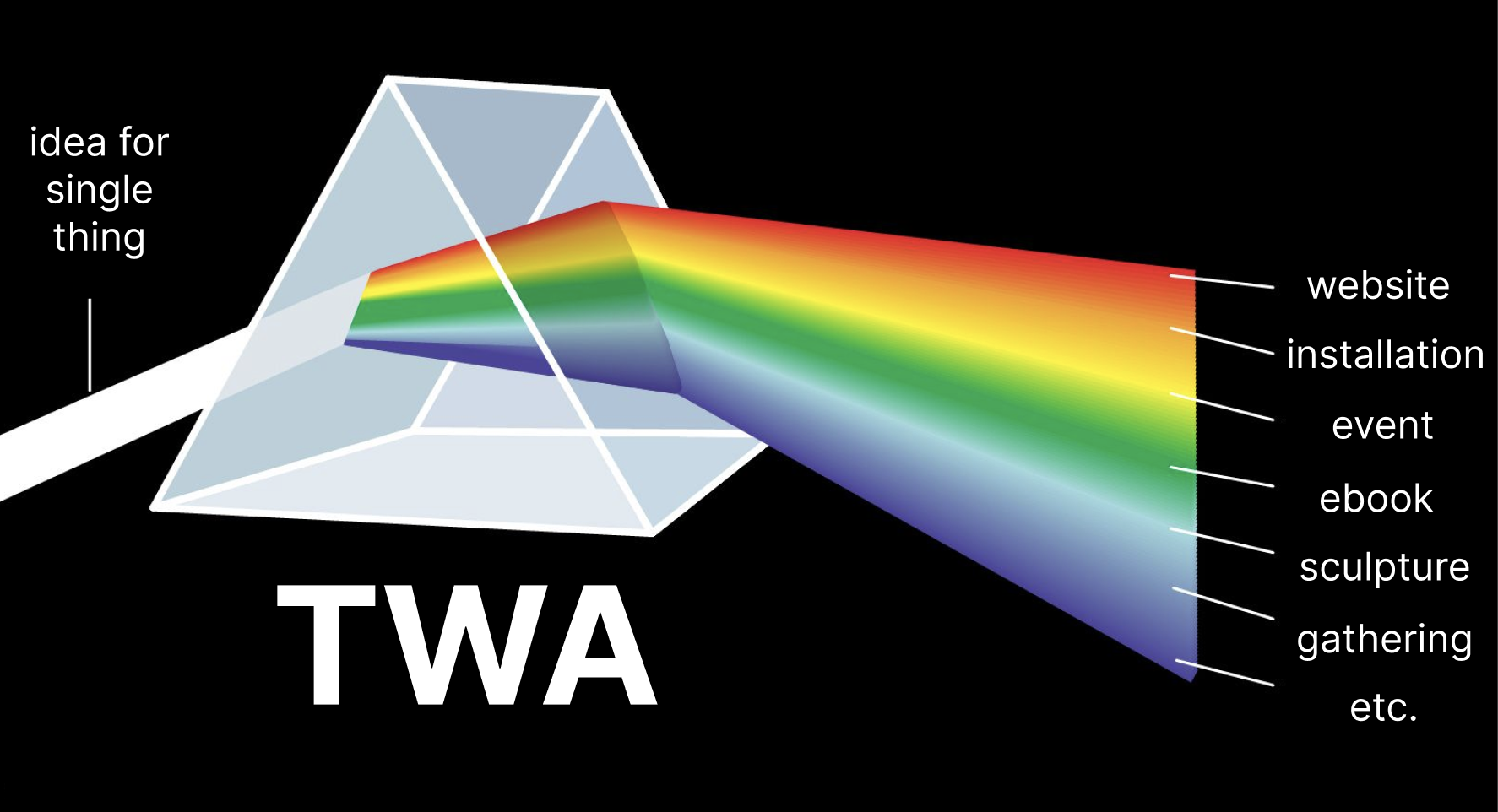
( What is the expected workload? )
Outside of the weekly class hours, participants are expected to further develop their projects between meetings.
( Do I need any technical experience to join? )
There are no strict prerequisites. However, this class includes a number of technical tutorials. Students are expected to have an aptitude for visual production and ideation (both physical and digital), and a base familiarity with creating things digitally (website, app, digital publication, etc.).
( What materials do I need? )
Literally, participation requires a laptop computer, plus any other materials you imagine your TWA requires. Additionally, to apply and do well in the class, you will also need a “point of departure” — the place from where you'll explore multiple modalities.
( What’s the point of departure? )
The “point of departure” 🛫 is the place from where you’ll explore multiple modalities. Think of it like a core concept or a mantra — you can always return to it even if many things change. Start to imagine it evolving into digital, physical, and temporal expressions. Do you have any specific visions? What grounds / anchors you in this idea? Take some time to think about this, as you will continue to reference it throughout the duration of the class.
( Can I participate remotely? )
This summer, we are only doing in-person in NYC. But feel free to write us at twa@ultralight.school if you are interested in future possible virtual offerings.
( Are there scholarships available? )
Yes, there are two half-priced slots available for individuals who need help funding the class.
( Who might be good for this class? )
We imagine this class is ideal for anyone — designers, artists, writers, programmers, and others — who has a strong concept or idea they are excited to shapeshift and explore through multiple mediums. Since this class meets twice a week (on Thursday evenings and Sunday afternoons), we imagine it’s best for people with some air in their schedules. We’d also like to form a complementary and supportive cohort (see our code of conduct), so we welcome anyone with specific perspectives and/or skills who are also excited to witness and encourage others’ projects as they evolve.
